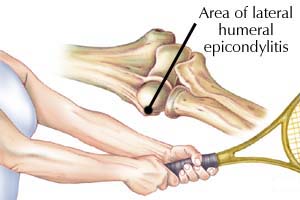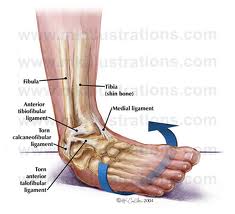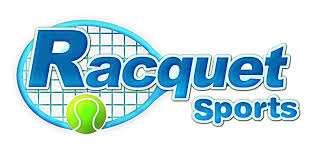
© Ennis Physiotherapy Clinic, 3A Barrack Close, Barrack Street, Ennis, Co. Clare V95 X437 Tel: (065) 6840757
Spinal Problems Neck + Back Pain Disc Injury Whiplash Posture
Lower Limb Injuries Walking + Running Ligament Injury Snowsports Injury Home Exs Prog
Upper Limb Injuries Ligament Sprains Tendon+Muscle Golf + Bike Set Up Useful Links

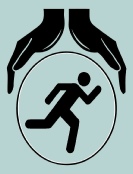


065 6840757

Mon - Fri 9.30am - 8.30pm


3a Barrack Close, Barrack St., Ennis, Co. Clare V95 X437
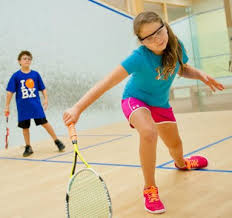
Racquet sports include a number of individual sports which as the name suggests involve the use of a racquet in one hand, such as tennis, badminton, squash, lacrosse + racquetball. These sports could also be considered to include other sports such as table tennis and handball (Olympic and GAA) which use largely the same movement patterns and skills.
Racquet Sports are widely practiced throughout the world by a wide cross section of society, including the young and older person, the recreational player and the elite professional player.
Racquet sports are characterised by the use of a racquet (or bat), gripped in one hand, which is used by swinging it to strike a ball towards the opponent’s side of the court or field. There is a vast choice of racquets to choose from and each sport has its own particular features and skill set. All involve a combination of rapid changes of direction and short sharp movements of upper and lower limbs which require significant agility + core stability, flexibility and movement control.
Each sport uses a court, or field of play, which may have a variety of different surfaces underfoot, and may be enclosed within a confined space – as in squash.
Racquet Sports
Correct grip size equates to the distance from the middle
crease of your palm to the tip of your finger.
A good rule of thumb is to hold the racquet in one hand and
slide the index finger of the other hand in between the tips of
your fingers and the palm
If there isn't enough room for your index finger, the racquet
grip is too small.
If there is a lot of extra room, the racquet grip is too large.
If you're between two sizes, choose the smaller one; you can
always increase the circumference by adding grip tape
The following is advice on selecting a racquet for playing tennis. Similar principles may apply to selecting racquets for other sports but each sport has its own specific features and needs. For more detailed information seek the advice of a qualified coach from that sport or other knowledgeable person.
Racquet Grip Size
A correct grip size, as outlined above, is important for avoiding injury around the elbow and wrist in particular. There are a couple of ways to measure - using either the middle finger or the ring finger
Head Size
The size of racquet head will depend on your playing standard.
An oversize racquet is more suitable for beginners as the larger sweet spot means
fewer miss-hits, allows for more spin to be put on the ball and greater power to be
transferred to a shot.
Mid-sized racquets are used by more accomplished players.
The smaller head size offers more manoeuvrability and stability, but requires the player to generate more power themselves.
Racquet Weight and Materials
Graphite and Aluminium are light but provides good power and control, making them perfect for beginners.
Boron or Kevlar racquets are the lightest but are stiffer - and so transfer all the vibrations from the shot to the arm - and are more often used by advanced players.
When you hold the racquet, consider how the weight is balanced. People who typically play from the baseline tend to prefer racquets that are "head-heavy" while those who play up at the net and volley often prefer racquets that are "handle-heavy" You can alter the weight balance of the racquet by adding lead tape to the frame.
"Handle-heavy" racquets are easier on the arm and offer greater control, but the player has to be able to generate more power and spin, and so making it most suitable for experienced players with higher skills
Racquet Length
The longer the length of the racquet, the greater the leverage on a swing, therefore giving more power to a shot.
Beam Width
The beam is the area of the racquet on either side of the head. A wider beam will give more power to a shot by enhancing the trampoline effect of the strings, but it will reduce the amount of control over the ball.
String Tension
Most racquets come pre-strung with the strings at the middle of their tension range.
Tighter strings mean more shot control and spin, which is better if you're trying to improve accuracy.
Looser strings mean more power but less control.
More experienced players tend to play with high string tension for better control.
Natural gut string is more forgiving on the elbow and shoulder.
Many racquets are rated / recommended by "swing speed", so it's important to assess your swing before you choose. Beginners have a "slower, shorter" swing profile and need a racquet with more power (rebound)
More advanced, stronger players have a "long, fast" swing need a "control" racquet ("deader" with less trampoline effect.)
Dampers can be used to absorb vibration and reduce shock to the wrist and elbow.
The multitude of demands on the body during racquet sports must be accounted for during training for these sports.
Each of the sports is quite different - in terms of equipment used, ball size and movement and shot execution – but there are many similarities also: using a racquet in one hand, general movement patterns and aspects of skill (agility, speed etc) are the same in each of the sports. The whole body needs training for these sports.
Components of a well designed program include flexibility, core stability, muscle strength + endurance, plyometrics, balance and agility and sport specific skill / technique work. It is preferable to do most training in a standing position and to use all planes of motion.
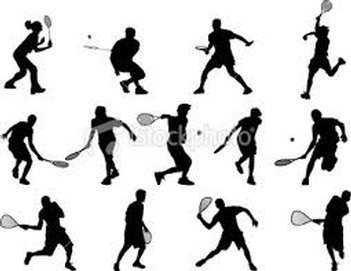 Games can last up to 2-3 hours so these sports will require a solid base of cardiovascular endurance for optimal performance.
Games can last up to 2-3 hours so these sports will require a solid base of cardiovascular endurance for optimal performance.
This can be achieved through steady-state aerobic training (jogging, cycling, and swimming at moderate intensity) for durations of between 30 - 60 minutes.
The dynamic stop-start nature of these sports requires short periods of high-intensity work which uses the anaerobic energy system.
This can be trained with higher-intensity 20 minutes of speed work – treadmill or bike intervals or hill sprints.
A solid base of muscular endurance is also necessary for all racquet sports - weekly gym sessions including total body conditioning, comprehensive core and flexibility training.
Tennis, badminton, and squash players must be able to react quickly and explosively to serve
or return the ball and place it with precision. They also need to be able to repeat these motions
many times with little rest between efforts throughout the match. Maximal strength, power,
muscle endurance, and neuromuscular control in all planes of motion are needed to perform
well and avoid injury
Racquet sports make high demands on skills such as agility, speed, co-ordination and balance,
and all need to be trained for optimal performance. Footwork drills, one-legged drills, core work,
speed drills, hand-eye-feet co-ordination and working with reaction balls would all be beneficial.
Maximal strength, power, and muscle endurance with neuromuscular control should be the focus of your training program.
Common Muscle Imbalances
Common muscle imbalances are seen in racquet sports players.
Muscles that are commonly tight and need to be stretched include: hip flexors, quads, pectorals and anterior shoulder girdle, calf, wrist flexors, and lats.
Muscles that are commonly weak and need to be strengthened include: trunk stabilizers such as spinal erectors and abdominals, posterior shoulder girdle and scapular stabilizers, rotator cuff, gluts, hamstrings, wrist extensors, and hip abductors and adductors.
Because the racquet arm is used more than the non-dominant arm, muscle and movement imbalances can occur between right Vs left + back Vs front sides of the body *especially in the upper body & trunk). Imbalances need to be addressed to improve performance and to prevent injury.
The US Tennis Association have a good section on sports science and training which can be accessed by clicking here
USTA Dynamic Warm up USTA Strengthening Exercises
Here is an example of elite players warming up and down - but it is in table tennis! The principles apply across many sports and include aerobic (running) dynamic and static stretching.
Typically modern approaches dictates an emphasis on dynamic exercise is during warm up and a some more static stretching within the warm down routine. This video does not include the sport specific drills part of warm up which would normally follow on from the general exercise routines.
Racquet Grip Size
Selecting a Racquet
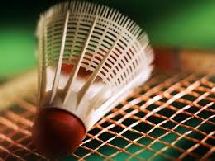
Training for Racquet Sports
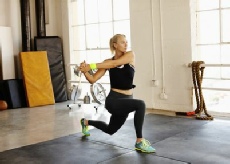
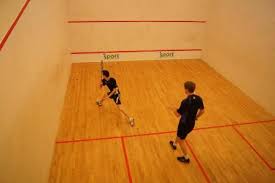
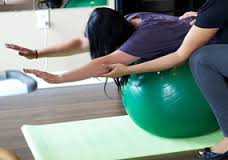
The most common injuries are sprains and strains of the ankle, knee, wrist, elbow, and rotator cuff.
Many racquet sport injuries occur because of overuse or overloading at the shoulder, elbow, or wrist of the dominant arm. Ankle inversion sprain is among the most common injury pf the lower limbs, associated with trying to decelerate rapidly during lateral movement.
Poor posture & muscle imbalances which force a player to rely on compensatory movement patterns repeatedly throughout the game can lead to overuse injuries, particularly to the rotator cuff or elbow.
One 8-year study of racquet sports injuries found a distribution of squash (59%), tennis (21%) and badminton (20%). The higher proportion of squash injuries probably relates to higher physical stress and risk of contact in this sport. They also found injuries more prevalent in persons over 25 years (59%) i.e. the reverse for sport in general.
Acute traumatic injuries were seen especially in squash players, a majority affecting the knee, lumbar region, muscles and ankle.
Tennis players presented most commonly with lateral epicondylitis, patello-femoral
pain and lumbar disc prolapse. Most experts believe that tennis elbow is caused by
overloading of the forearm muscles due to faulty backhand technique - improper body position with
the elbow leading the racquet combined with late strokes and "wristy" impacts are suspected to cause
this overloading
The most common tennis injury in players of all ages is muscle strains and ligament
sprains secondary to overuse. There are particular risks for young players because,
in general, they begin playing with a lower level of physical conditioning. Lower limb
injuries are twice as common as those of the upper limb or spine in young players,
with ankle injuries being the most common
The badminton injury pattern overlapped the others.
Lower limb injuries predominated in all three sports. Many injuries occurred in new, infrequent or social players. Poor warm-up was a common factor among new and established players.
In general, injury patterns are observed to be more sports specific than gender specific. However gender differences may account for variation in the distribution of injuries in females players - Injuries to the abdomen, back, and groin were significantly fewer in female players, females had more injuries to the foot, leg, calf, and wrist whereas males sustained more injuries to the ankle, groin, and hand and more contusions, abrasions, and lacerations.
If you sustain an injury while playing racquet sports or feel you are not playing at
maximum performance allow us to assess the situation for you and develop a
rehabilitation programme for you. To contact us click here
Racquet Sports Injuries
